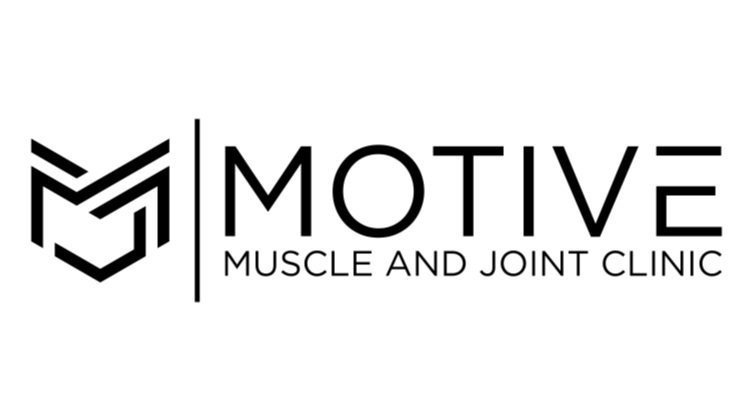Most Common Athletic Injuries at Motive
“Athletic injuries” occur because the body was asked to do something it was not ready to do. Athletic injuries are certainly not exclusive to athletes, but they occur more often in this population due to greater imposed demands on the body. Poor conditioning, insufficient warm-ups, and poor neuromuscular control are all risk factors for potential injuries.
Common Sports-Related Injuries treated at Motive:
Tendinopathies
Tendinopathy and/or tendonitis are broad umbrella terms that encompass several overuse-related conditions affecting tendons. Repetitive or high-exertion activities can result in micro-tears and inflammation (tendinitis) of the tendons or degeneration (tendinosis) of the tendon fibers over time.
Common tendinopathies include rotator cuff tendonitis, patellar tendonitis, achilles tendinitis, medial and lateral elbow (tennis/golfer’s elbow), and glute tendinopathy.
Strains
Strains include tears or overstretching of muscles or tendons that attach muscle to bone within a joint. Overuse, twisting, and pulling are common culprits of strains.
Muscle strains can cause extreme soreness, bruising, stiffness, or a feeling of extreme tightness, and in higher-grade strains, loss of strength and sometimes indentation under the skin.
Common strains include hamstring strains, calf strains, quad strains, as well as neck and back strains.
Sprains
Sprains include tears or overstretching of ligaments that connect bone to bone within a joint. Direct impact, twisting, or falls are common culprits of sprains.
Immediate symptoms often include pain, swelling, the sound or sensation of a “pop” and loss of stability in the affected area.
Common examples of these include ankle sprains, knee sprains, and wrist sprains.
Bursitis
A bursa is a fluid-filled sac located next to the tendons in some of the major joints which helps to reduce the friction of the joints moving. Bursitis refers to inflammation of the bursa sac and can occur in any of the bursa sacs. Bursitis can occur because of a trauma to the bursa sac, repetitive motion of the joint, or prolonged pressure on the joint.
Common areas for bursitis include shoulder bursitis, elbow bursitis, hip bursitis, and knee bursitis.
Motive’s Approach to Treating Sports-Related Injuries:
Society has taught to rest and ice sports-related injuries. However, modern research is now pointing towards taking an active approach to care. Contrary to popular belief, movement early on is encouraged and actually aids in the healing process. Taking an active approach early on aids in increasing blood flow, reducing swelling, and restoring mobility.
Injury protocols have evolved significantly since RICE (rest, ice, compression, elevation), and we are now much better off following the PEACE and LOVE protocol.
Motive echoes an active approach to healing. Our recipe for almost any injury is to start small and progress load or activity. In other words, we start with very minimal demands from the injured tissue and progress slowly to add more imposed demands to the tissue. The body needs load and stress to the joint to recover! It’s just a matter of exactly how we progress that load and stress to get you back to baseline.
Once back to your “normal”, we want to ensure you are set up for success as to prevent recurrence of injury. “Injury prevention” is a hot button topic in the health and world because, no, technically we can’t actually prevent injuries. However, we use injury prevention as a term that refers to implementing strategies that reduce injury risk through programming progressive strength training and neuromuscular control.
Our goal with treating sports-related injuries is to leave you better than we found you, and more equipped with knowledge on how to manage any issues that arise.
If you’re battling a new or persistent sport-related injury and are looking for guidance, our doctor is here to help! Motive is a one-stop-shop for treating tendinopathies, sprains, strains, and bursitis in Norman, OK.






